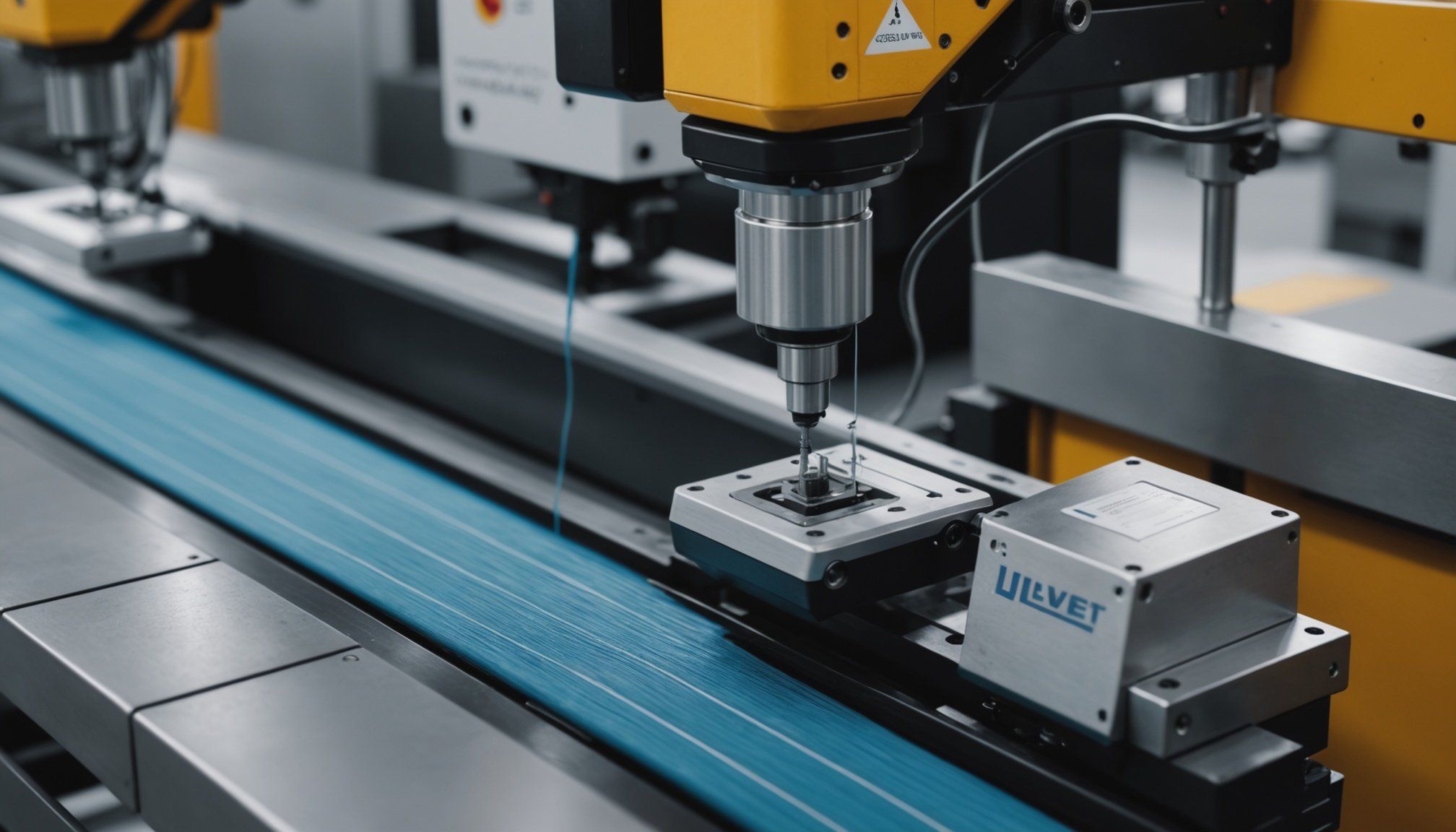Understanding Digital Thread Technology
Digital thread technology is an integral innovation in today’s manufacturing processes, designed to enhance both manufacturing efficiency and product traceability. It refers to the seamless flow of data and information throughout the entire lifecycle of a product, from design and development to production and even recycling.
At its core, digital thread technology comprises several key components, including digital twins, real-time data analytics, and an overarching digital framework that connects all stages of manufacturing. These elements collectively ensure that information is accurately synchronized across various systems, facilitating effective communication and decision-making.
Also read : Boosting employee well-being: effective digital strategies for uk companies to enhance mental health support
Integration across manufacturing systems is a hallmark of digital thread technology. It uses connectivity to link disparate systems, such as CAD software and factory floor equipment, ensuring that data can flow uninterruptedly. This connectivity boosts both efficiency and traceability, as it allows stakeholders to access and analyze data easily, improving response times and reducing errors.
Data and connectivity are crucial in enhancing traceability. They enable manufacturers to track components and products through every stage, ensuring compliance with industry standards. This traceability also provides valuable insights into the product lifespan, allowing for predictive maintenance and reduced downtime, further boosting efficiency.
Topic to read : Boosting employee well-being: effective digital strategies for uk companies to enhance mental health support
Key Features of Digital Thread Technology
Key features of digital thread systems include the seamless integration of data across platforms, enabling smoother manufacturing workflows. This technology thrives on its ability to connect diverse systems and stakeholders, enabling everyone to interact with a unified source of information. This connectivity allows for real-time data sharing and collaboration, empowering teams to make informed decisions more swiftly.
One essential feature is the capacity for interoperability, which eliminates barriers between various software and machinery within a manufacturing process. By fostering a culture of connectivity, digital thread technology facilitates a harmonious exchange of information, resulting in reduced errors and enhanced workflow efficiency.
The importance of real-time data cannot be overstated. By continuously updating information across platforms and systems, manufacturers gain the ability to respond to changes immediately. This is vital for trial runs, simulations, and adjustments, ensuring that production processes can adapt quickly to evolving demands and challenges. Through real-time data sharing, manufacturers can significantly improve outcomes and maintain competitive market positions.
In essence, digital thread technology provides the foundation for an interconnected manufacturing environment, steeped in flexibility and adaptability. These key features collectively contribute to a more efficient, responsive, and transparent manufacturing landscape.
Practical Applications in Manufacturing
Digital thread technology provides remarkable opportunities for enhancing manufacturing processes across various industries. Its capacity for real-time data connectivity and traceability makes it a versatile tool for improving productivity and innovation.
Case Study: Aerospace Industry
In the aerospace sector, practical applications of digital thread technology are already apparent. Companies utilize it to connect design, production, and maintenance processes. This ensures seamless data flow and integrates information crucial for maintaining safety and compliance. By providing real-time insights, this technology allows for efficient monitoring of components throughout their lifecycle, leading to improved performance and reduced error rates.
Case Study: Automotive Manufacturing
In automotive manufacturing, digital thread technology aids in synchronizing complex manufacturing workflows. As a result, information from CAD designs, factory floor analytics, and supply chain logistics can be integrated to optimize production. This connectivity ensures that stakeholders across different stages can make informed decisions, reducing downtime and enhancing agility.
Real-world Implementation in Consumer Goods
For consumer goods, companies implement digital threads to streamline operations. Real-time data integration facilitates rapid response to market demands, elevating product quality and reducing waste. By fostering transparency, manufacturers can trace products back to their origins, ensuring ethical manufacturing practices and boosting consumer trust.
Benefits of Digital Thread Technology
Digital thread technology offers a range of pivotal benefits that revolutionize manufacturing processes. One of the primary advantages is efficiency improvements. By streamlining workflows, manufacturers can significantly cut down on production time and reduce resource wastage. These streamlined processes lead to cost savings, allowing companies to allocate funds more effectively and focus on innovation.
Traceability advantages provided by digital threads enhance product quality and compliance. This aspect of digital technology ensures that every component is tracked and recorded throughout its lifecycle. Such meticulous tracking promotes accountability and helps in maintaining alignment with industry standards. Consequently, manufacturers witness a remarkable boost in product quality, which is crucial for building consumer trust and loyalty.
In addition to cost savings and traceability, digital thread technology fosters greater innovation and agility in manufacturing sectors. The real-time data and connectivity enable teams to respond swiftly to market changes and technological advancements. Embracing digital thread systems encourages exploratory approaches and supports the agile adaptation of new strategies. This flexibility is essential for maintaining a competitive edge in ever-evolving markets.
In essence, embracing digital thread technology leads to a more efficient, innovative, and quality-focused manufacturing environment.
Challenges and Considerations
Adopting digital thread technology presents numerous challenges that manufacturers must navigate. Implementation hurdles often stem from the complexity of integrating disparate systems. Compatibility issues between existing software and digital thread solutions can lead to integration difficulties. Overcoming these obstacles requires a clear understanding of system capabilities and meticulous planning.
To address these challenges, companies should focus on strategies for success, such as conducting thorough system audits before integration. Identifying and resolving potential conflicts in advance ensures smoother adoption. Employing a phased approach can also help manage the transition, allowing teams to adapt progressively without overwhelming disruptions.
Change management is crucial during this transformation. Manufacturers need to foster a culture that embraces innovation and continuous learning. This involves investing in training programs that help employees become proficient with new technologies. Educating stakeholders on the benefits and operations of digital thread systems alleviates resistance and promotes broader acceptance.
In summary, the successful implementation of digital thread technology hinges on robust integration strategies, proactive management of systems compatibility, and comprehensive training initiatives. By addressing these factors, manufacturers can mitigate hurdles and fully leverage the potential of digital threads to enhance manufacturing processes.
Actionable Tips for Integration
Implementing digital thread technology effectively requires strategic planning and adherence to best practices. Here are some actionable insights to facilitate a smooth integration process.
-
Conduct a Comprehensive Audit: Before integration, evaluate existing systems and processes. Identify potential compatibility issues and plan modifications accordingly. This understanding helps streamline the integration process and anticipate obstacles.
-
Phased Implementation: Transitioning to digital threads should be gradual. Start with a pilot program in a specific area to observe effects and resolve issues. Use the pilot’s success and insights to inform further rollouts, ensuring systematic adaptation.
-
Prioritise Training and Support: Facilitate workshops and training sessions to enhance employees’ understanding of the new technology. Knowledgeable staff are less resistant to change and more adept at leveraging digital thread benefits.
-
Continuous Monitoring and Feedback: Establish feedback loops to assess integration progress. Regularly review system performance and adjust strategies to maintain alignment with evolving manufacturing needs.
-
Collaboration Across Departments: Encourage open communication between all stakeholders. This ensures mutual understanding and integration success, creating a unified approach to problem-solving and innovation across the manufacturing processes.





